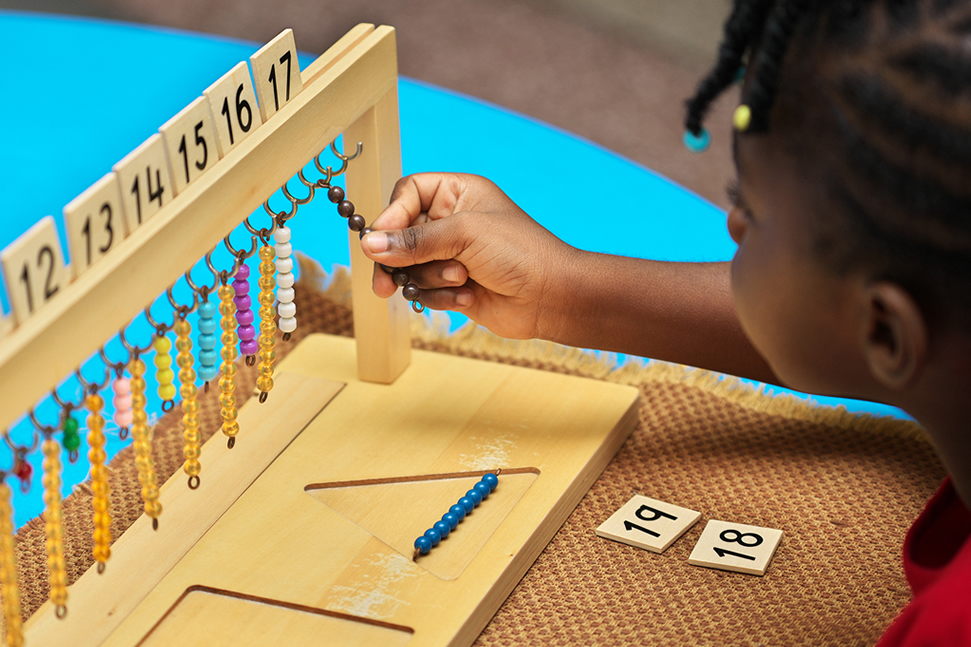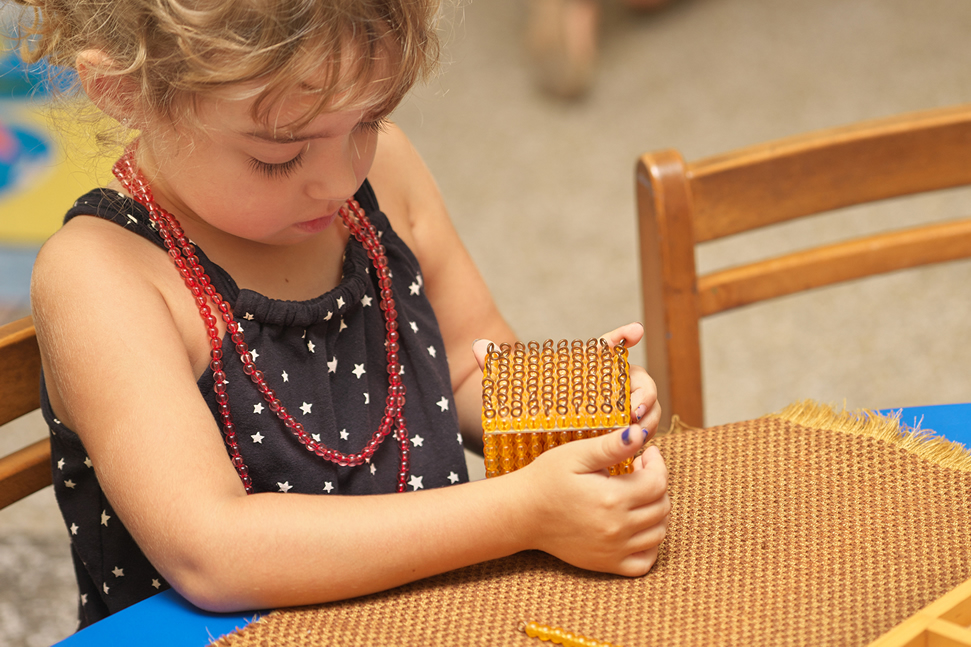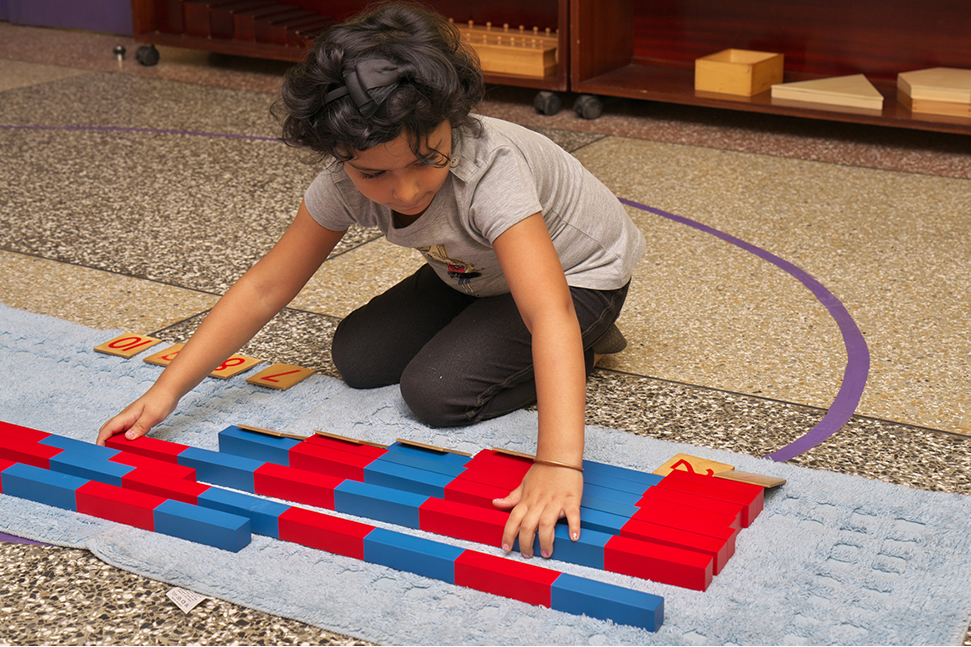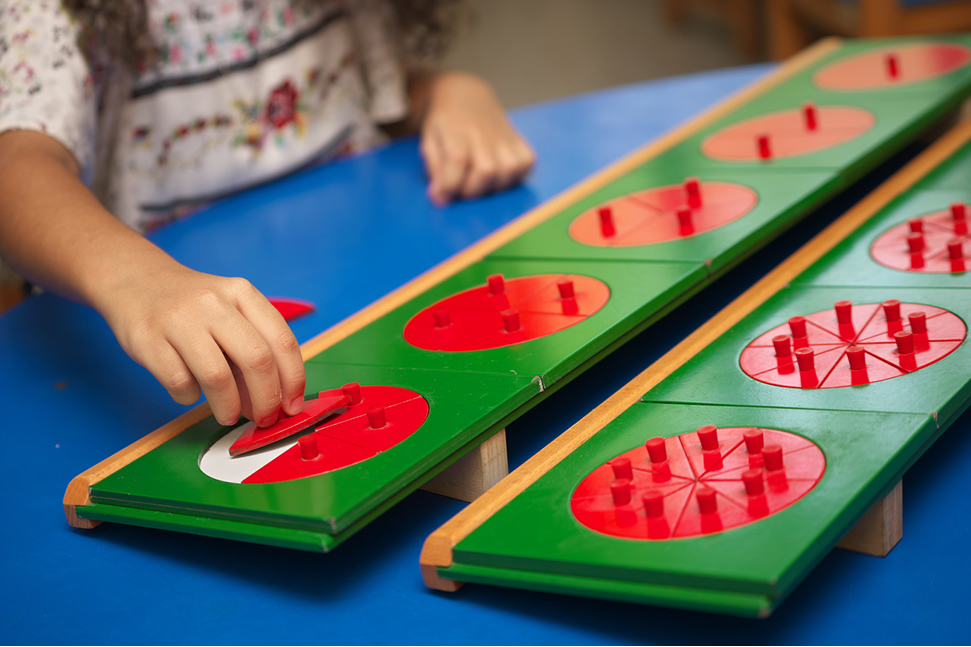When adults are first shown the Montessori math curriculum, the reaction is always the same − they always wish it had been their base for understanding Mathematics.
Learning math begins with concrete examples and it slowly progresses to abstract. Children begin to associate numeral and quantity with number rods and number cards. Pupils master the basics of arithmetic using concrete materials and therefore acquire a grounded understanding of the meaning of arithmetic operations, which will help them for the rest of their lives!
Do you know many people who enjoy math? How many people do you know who cringe when doing simple addition on a piece of paper? Math is probably the most despised school subject… and it is no wonder. If all children were to learn math using the Montessori materials, almost every one of them would at least understand, if not actually enjoy, it. Imagine what that could do for technology, industry, society and our world!


The Golden Beads Presentation Tray is the first lesson in Montessori Math: Introducing Place Value and the Decimal System. The Montessori Math Golden Beads Presentation Tray is a simple presentation including one of each of a unit, a ten bar, a hundred square, and a thousand cube. The goal is to introduce the child to the language of the beads, to the decimal system, and give a concrete exercise with the decimal system.


The Number Rods are the same as the Red Rods, except they have alternating blue and red segments. The first thing I asked my child to do with the Number Rods is build a stair, just as he did with the Red Rods. When the stair was complete, he was still keen to continue, so I introduced the first three rods to him via a three-period lesson (Namimg the cardinality of 1.2.3). After the third rod, he was still attentive and focused, so we were able to continue with the next three rods. We stopped at the 6 rod as I could tell Jordan was starting to get tired.
Over the next few weeks we continued our work with the Number Rods and eventually he was able to pair each rod together with the corresponding numeral … way to go Jordan!
The Number Rods are great for teaching one-to-one correspondence and it is made simple for the children because the quantities are fixed. The Number Rods also provide a visual understanding of the order of numbers (three goes between two and four). Jordan is now more than ready to begin work with the Spindle Box!
